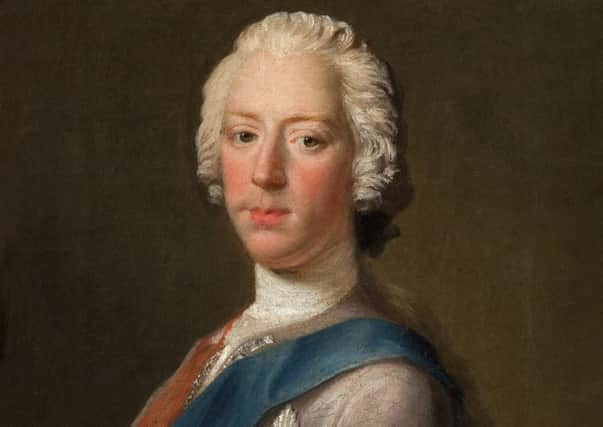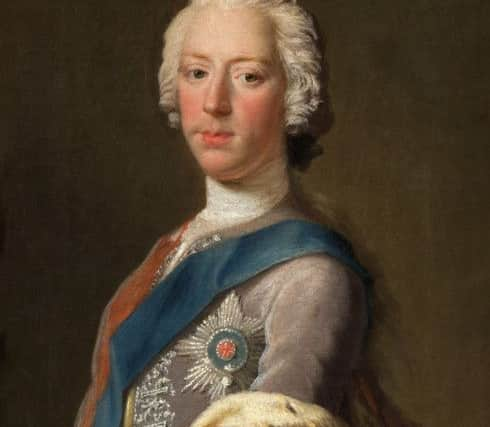Unique Bonnie Prince Charlie painting secured for Scotland


The portrait of “The Young Pretender”, thought to be the only one painted in Britain during his lifetime, has been acquired by the National Galleries of Scotland after two years of negotiations.
The painting, described as being of “great historical resonance,” is now a centrepiece of a display of Jacobite art treasures after being largely unseen anywhere in public for more than 250 years.
Advertisement
Hide AdAdvertisement
Hide AdThe work - created at Holyrood Palace by Allan Ramsay, the leading Scottish artist of the time - was previously part of the private art collection of Gosford House, in East Lothian, the historic seat of the Earls of Wemyss and March, since the 18th century.


It was only identified following detective work by art historian Dr Bendor Grosvenor and donated to Scotland’s national art collection through a scheme which allows major works to be transferred to public ownership instead of paying inheritance tax - at no cost to museums and galleries. Around 10 are allocated to Scotland’s national collections each year by an expert panel.
Valued at more than £1.1 million, the portrait of the prince - painted by Ramsay in October 1745 - has gone on display at the Scottish National Portrait Gallery in Edinburgh just weeks ahead of the 270th anniversary of the Battle of Culloden, defeat at which led the prince to flee into exile.
The National Galleries said the portrait, which shows the prince “turning to confront the viewer directly, was created when the sitter was just 25 and the artist 32. He is wearing a powdered wig, has a velvet robe fringed with ermine, and the blue riband and star of the Order of the Garter, the oldest British order of chivalry.
Dr Grosvenor tracked down the painting several years after disclosing that a portrait of the prince by French artist Maurice Quentin de La Tour, which had been displayed in the same gallery, was his brother Henry.


He went on to discover a letter summoning Ramsay to paint the prince’s portrait at Holyrood and found an old black and white photograph of a painting of him in an archive which bore the hallmarks of the artist’s work. Records at Gosford, where the painting was hung in a private part of the house, revealed it had long been identified as a Ramsay.
Christopher Baker, the gallery’s director, said: “It’s an extraordinary and intimate portrait of Bonnie Prince Charlie, painted at the height of the 1745 Rising, the moment of greatest drama in Jacobite history.
Advertisement
Hide AdAdvertisement
Hide Ad“When Ramsay was summoned to the palace he was already a very sophisticated artist, who had already travelled across Europe, and was emerging as the most successful of all Scottish painters. The wonderful image is fresh, immediate and gives you a real sense of the direct relationship with the sitter.
“It is a little gem of a picture, almost on a miniature scale, which was likely produced on that scale because it was planned from the outset that it would be replicated as prints. It becomes the key source for an an awful lot of propaganda to support the Jacobite cause, which were widely distributed, not just in Scotland, but right across Britain and Europe.
“The painting was recorded in the Gosford collection in the late 18th century. It is probably the right way of putting it to say that it had been forgotten where this painting was, but it’s wonderful that it’s been rediscovered.
“It’s a work of great historical resonance, which in a real sense has now come home, as it will be celebrated as a key work in the nation’s Jacobite collection and as such become widely accessible. We are immensely grateful to everyone who has made its transference to public ownership possible.”
Edward Harley, chair of the Acceptance in Lieu Panel, said: “We are pleased to have helped this iconic image of Bonnie Prince Charlie return to the city in which it was painted 270 years ago.
“It now takes its fitting place as one of the highlights of the great collection of the Scottish National Portrait Gallery where it can be enjoyed by all. This is indeed a unique moment in Scottish history.”